Key Culture Premises of Deeper Learning in SFUSD
Link to this section
Student-Centered Instruction
Student-centered learning shifts the focus of instruction from teacher to student, requiring students to be active, empowered participants in their own learning. Students engage in demanding tasks, work collaboratively on issues they are passionate about, and develop their own drive to extend their knowledge and skills in new ways. (In Search of Deeper Learning, Transforming Schools, Creating Cultures of Thinking)
What Student-Centered Instruction Looks Like
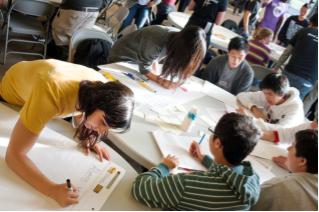 Students drive their own learning. Students are creators of knowledge, aspiring to become members of the disciplinary field. Learning is connected to students’ knowledge, their experiences, to their communities. Students carry the cognitive load, add new questions for exploration, suggest ways to move the class forward, offer alternative means of demonstrating understanding, recognize what they need to learn next, and exercise voice and choice.
Students drive their own learning. Students are creators of knowledge, aspiring to become members of the disciplinary field. Learning is connected to students’ knowledge, their experiences, to their communities. Students carry the cognitive load, add new questions for exploration, suggest ways to move the class forward, offer alternative means of demonstrating understanding, recognize what they need to learn next, and exercise voice and choice.
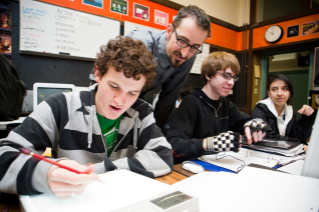 Teachers facilitate ongoing inquiry rather than deliver static knowledge. Teachers make thinking and learning visible, to demystify, inform, and illuminate these processes. Teachers embody the stances and behaviors of learners and of the disciplinary fields they teach. Student-centered rarely looks like the teacher carrying the cognitive load, serving as the expert in the room, doing most of the talking, directing the same process for every student’s learning journey, reusing the same curriculum and pacing every class, every year.
Teachers facilitate ongoing inquiry rather than deliver static knowledge. Teachers make thinking and learning visible, to demystify, inform, and illuminate these processes. Teachers embody the stances and behaviors of learners and of the disciplinary fields they teach. Student-centered rarely looks like the teacher carrying the cognitive load, serving as the expert in the room, doing most of the talking, directing the same process for every student’s learning journey, reusing the same curriculum and pacing every class, every year.
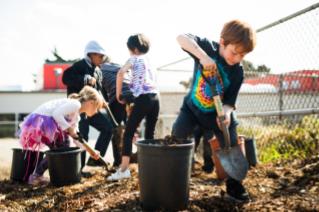 Classroom Community: Learning and thinking are as much a collective enterprise as they are an individual endeavor. Learning, therefore, occurs in productive communities of practice. For this to occur, students must feel known, valued, and respected by educators and peers and work in meaningful (rather than contrived), collaborative environments.
Classroom Community: Learning and thinking are as much a collective enterprise as they are an individual endeavor. Learning, therefore, occurs in productive communities of practice. For this to occur, students must feel known, valued, and respected by educators and peers and work in meaningful (rather than contrived), collaborative environments.
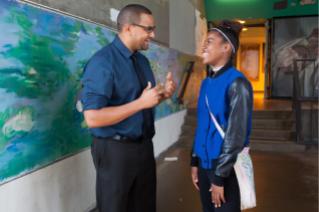 Site Leaders engage teachers in continuous learning, centering teachers as professionals in their fields and practice. Site leaders model in staff meetings and professional learning spaces “teacher-centered” learning, applying the same practices and principles above to adult learning spaces. Site leaders highlight successful student-centered practices already occurring in classrooms, and support all staff to deepen their understanding and implementation of student-centered practice.
Site Leaders engage teachers in continuous learning, centering teachers as professionals in their fields and practice. Site leaders model in staff meetings and professional learning spaces “teacher-centered” learning, applying the same practices and principles above to adult learning spaces. Site leaders highlight successful student-centered practices already occurring in classrooms, and support all staff to deepen their understanding and implementation of student-centered practice.
Central Office: Central leaders engage in continuous learning alongside sites, centering site staff as professionals of their fields and practice. Central leaders model in staff meetings and professional learning spaces “participant-centered” learning, applying the same practices and principles above to adult learning spaces. Central leaders highlight successful student-centered practices already occurring in classrooms/sites and facilitate strategic opportunities for continuous professional learning supporting sites to deepen their understanding and implementation of student-centered practice.
Student-Centered Instruction in Action
Learning by Doing
“...many of our oldest traditions of learning, particularly learning by doing and apprenticeship, remain the most robust ways to induct a learner into the increasing complexity and depth of a field.” - “The Deeper Learning Dozen”, p. 6
What Learning by Doing Looks Like
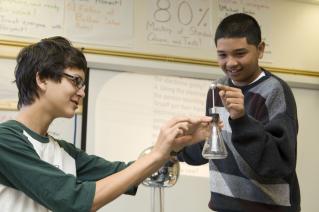 Students explore driving questions, challenges, problems, and scenarios; engage in sustained inquiry; and learn through their own agency and investigation.
Students explore driving questions, challenges, problems, and scenarios; engage in sustained inquiry; and learn through their own agency and investigation.
Teachers design experiences in which students discover by doing, rather than being told. Teachers organize learning through driving questions, plan for the kinds of questions to ask students to drive learning, and serve as a neutral facilitator when students answer questions (use questions to drive class thinking and discussion, rather than answer student questions or acknowledge questions as right or wrong). Teachers utilize the city as a classroom. Teachers seek to apprentice students to their fields: Students cannot simply learn about a discipline, they must learn the structure of how that discipline organizes its knowledge, and be apprenticed cognitively and literally into the discipline itself. “Through the process of observation, modeling, and emulation, one is gradually apprenticed into understanding and skills in the domain...moving from a peripheral participant to a more central one.” (p. 5, “The Why, What, Where and How of Deeper Learning in American Secondary Schools”)
 Classroom Community: Questions not answers guide the collective learning of the class. Students engage together in the authentic complexities of the field of study.
Classroom Community: Questions not answers guide the collective learning of the class. Students engage together in the authentic complexities of the field of study.
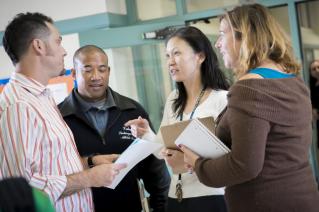 Site leaders design experiential learning opportunities for staff, to model best practices and engage staff in learning by doing. Professional learning is inquiry-based, launched through authentic driving questions and committed to ongoing experimentation within and examination of classroom practice. Site leaders support educators to design, logistically organize, and implement inquiry-based and experiential experiences and learning arcs for students.
Site leaders design experiential learning opportunities for staff, to model best practices and engage staff in learning by doing. Professional learning is inquiry-based, launched through authentic driving questions and committed to ongoing experimentation within and examination of classroom practice. Site leaders support educators to design, logistically organize, and implement inquiry-based and experiential experiences and learning arcs for students.
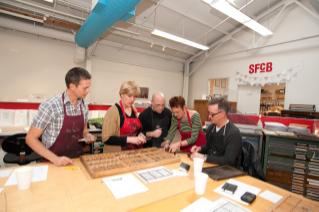 Central office leaders design experiential learning opportunities for site staff, to model best practices and engage site staff in learning by doing. Professional learning is inquiry-based, launched through authentic driving questions and committed to ongoing experimentation within and examination of site practice. Central leaders support site educators to design, logistically organize, and implement inquiry-based and experiential experiences and learning arcs for students - by highlighting successful models, supporting with strategic resources and tools, and enabling the structures and conditions necessary for sites to succeed.
Central office leaders design experiential learning opportunities for site staff, to model best practices and engage site staff in learning by doing. Professional learning is inquiry-based, launched through authentic driving questions and committed to ongoing experimentation within and examination of site practice. Central leaders support site educators to design, logistically organize, and implement inquiry-based and experiential experiences and learning arcs for students - by highlighting successful models, supporting with strategic resources and tools, and enabling the structures and conditions necessary for sites to succeed.
Learning by Doing in Action
Depth over Breadth
We must choose depth: “The tension is inescapable, and the choice is unavoidable: go with depth...Decades of research bear this out: when deep, conceptual understanding is attained, learning is enduring, flexible, and real....We must rid ourselves of any residual notions that education is the transmission of needed knowledge. Rather, we are teaching skills, and one skill most generally: how to ride a tsunami of knowledge whose future content we can’t even begin to imagine.” - Transforming Schools, p. 8-9
What Depth Over Breadth Looks Like
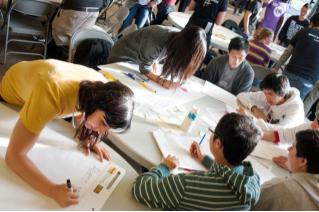 Students have opportunities to explore content with depth, building knowledge in order to apply, transfer and create with that knowledge. Students learn how to learn, exercising agency to make choices best suited for their own learning style. Students develop the metacognition, schema, and thinking skills to tackle any developmentally appropriate task or challenge.
Students have opportunities to explore content with depth, building knowledge in order to apply, transfer and create with that knowledge. Students learn how to learn, exercising agency to make choices best suited for their own learning style. Students develop the metacognition, schema, and thinking skills to tackle any developmentally appropriate task or challenge.
Teachers choose depth over breadth - “Teach less, learn more.” Rather than a goal of “coverage” which often equates to surface understanding and knowledge easily forgotten, educators aim for deep understanding of less content/knowledge - which research demonstrates builds schema and the thinking skills to transfer that learning to new and novel contexts. Teachers narrow the scope of explicit knowledge instruction and tasks of recall, and widen the scope of meaning-making, applying, evaluating, and creating with that knowledge. Teachers conceptualize content knowledge as vitally important - and “always a means to the end of some underlying, conceptual understanding.”
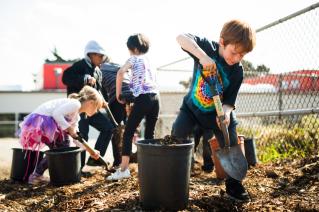 Classroom Community: Students collaborate to apply and transfer learning and create something that did not exist before. Students recognize the need for group roles, interdependence, and collective thinking in order to do their best work.
Classroom Community: Students collaborate to apply and transfer learning and create something that did not exist before. Students recognize the need for group roles, interdependence, and collective thinking in order to do their best work.
 Site Leaders choose depth over breadth, narrowing school priorities and professional learning goals to 1-3 desired outcomes. Site systems, structures and professional learning models work harmoniously toward those outcomes, with clear benchmarks in place and attainable action steps outlined. Site leaders support educators to make thoughtful choices toward depth by articulating cohesive vertical plans and what is tight vs loose, and by enabling the structures and conditions necessary for educators to succeed.
Site Leaders choose depth over breadth, narrowing school priorities and professional learning goals to 1-3 desired outcomes. Site systems, structures and professional learning models work harmoniously toward those outcomes, with clear benchmarks in place and attainable action steps outlined. Site leaders support educators to make thoughtful choices toward depth by articulating cohesive vertical plans and what is tight vs loose, and by enabling the structures and conditions necessary for educators to succeed.
Central leaders choose depth over breadth, narrowing district priorities and professional learning goals to 1-3 desired outcomes. Central systems, structures and professional learning models work harmoniously toward those outcomes, with clear benchmarks in place and attainable action steps outlined. Central leaders support sites to make thoughtful choices toward depth by articulating cohesive vertical plans and what is tight vs loose, and by enabling the structures and conditions necessary for sites to succeed.
Depth over Breadth in Action
Lengthy Arcs of Learning
Powerful learning moments, while essential for Deeper Learning, do not equate to Deeper Learning. Powerful learning can happen in an hour, in a particular classroom moment. Deeper learning, however, requires a lengthier trajectory - “arcs of learning that develop over time.” - In Search of Deeper Learning, p. 16
What Lengthy Arcs of Learning Look Like
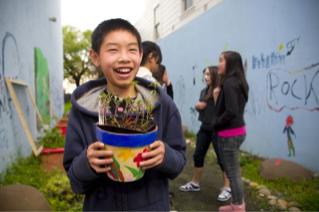 Students experience ongoing powerful learning moments, organized within a greater journey or acr of learning, toward a compelling purpose - a purpose that matters in the present. This longevity is what enables mastery and understanding, thus enabling student pride in and ownership of learning.
Students experience ongoing powerful learning moments, organized within a greater journey or acr of learning, toward a compelling purpose - a purpose that matters in the present. This longevity is what enables mastery and understanding, thus enabling student pride in and ownership of learning.
Teachers: To provide opportunities for students to demonstrate understanding and create work that matters, teachers backwards plan student learning trajectories toward a purposeful end goal. Throughout the course of study, cumulative learning enables increasing depth of understanding and the ability to apply learning. Teachers focus both on the arc of learning (driving/essential question, challenge, sustained inquiry, benchmarks, final product, etc.) and on the daily practices that enable powerful learning moments to occur throughout the journey.
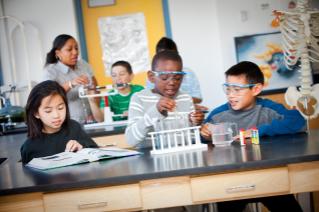 Classroom Community: Students work both collaboratively and independently toward a collective challenge, drawing on the expertise and thinking of their peers and bringing their own expertise and thinking to the group.
Classroom Community: Students work both collaboratively and independently toward a collective challenge, drawing on the expertise and thinking of their peers and bringing their own expertise and thinking to the group.
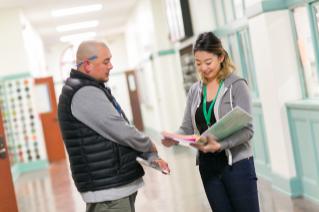 Site leaders backwards plan adult learning trajectories that build toward a purposeful end goal in which educators have the opportunity to both demonstrate understanding and create work that matters. Site leaders create the conditions, structures, and supports to enable lengthy arcs of learning for students within the school (within classrooms, vertically, interdisciplinary/horizontally, and whole school).
Site leaders backwards plan adult learning trajectories that build toward a purposeful end goal in which educators have the opportunity to both demonstrate understanding and create work that matters. Site leaders create the conditions, structures, and supports to enable lengthy arcs of learning for students within the school (within classrooms, vertically, interdisciplinary/horizontally, and whole school).
Central leaders backwards plan adult learning trajectories that build toward a purposeful end goal in which site educators have the opportunity to both demonstrate understanding and create work that matters. Central leaders create the conditions, structures, and supports to enable lengthy arcs of learning for adults and students within schools.
Lengthy Arc of Learning in Action
Symmetry Between Adults & Students
Student culture reflects staff culture. We cannot succeed unless all levels of the SFUSD system are aligned - in talk and in action. “...one part of a system cannot reach its potential if it is not working in harmony with other parts of the whole. If, for example, it is the mission of a school to teach students how to collaborate productively, then teachers and leaders must themselves be working to collaborate productively… Educational organizations cannot deepen learning without striving to be... “consistent throughout the entire system - self, classroom, school, district, and eventually the community.” - Transforming Schools, p. 13
What Symmetry between Adults & Students Looks Like
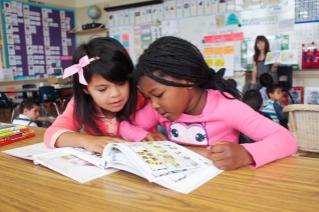 Students are enculturated into a rich learning environment enabling attainment of the Graduate Profile skills. “Dispositions must be enculturated - that is, learned through immersion in a culture.” (p. 20, Cultures of Thinking)
Students are enculturated into a rich learning environment enabling attainment of the Graduate Profile skills. “Dispositions must be enculturated - that is, learned through immersion in a culture.” (p. 20, Cultures of Thinking)
Teachers intentionally embody, name, and teach the behaviors and stances we hope to nurture in our students, specifically the Graduate Profile skills. The ways in which adults work with and learn from one another parallels the way in which they hope students will learn. (p. 375, In Search of Deeper Learning)
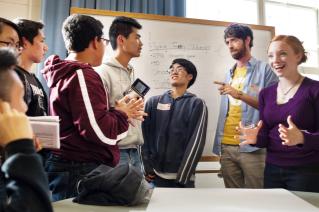 Classroom Community: Students experience a classroom culture that is safe and brave, rigorous and accessible, independent and interdependent. Students invest in the culture of the classroom, hold themselves and their peers accountable to classroom norms, and pursue individual and collective goals with the support of the community.
Classroom Community: Students experience a classroom culture that is safe and brave, rigorous and accessible, independent and interdependent. Students invest in the culture of the classroom, hold themselves and their peers accountable to classroom norms, and pursue individual and collective goals with the support of the community.
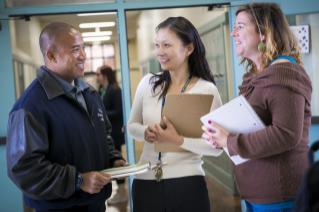 Site leaders and central office leaders intentionally embody the behaviors and stances we hope to nurture in our students, specifically the Graduate Profile skills. Site and central office leaders create ongoing opportunities for adults in the system to experience the learning we want for students. Site and central office leaders strive to match intent to impact, seeking continuous feedback from those closest to the student experience to refine and revise approaches and supports.
Site leaders and central office leaders intentionally embody the behaviors and stances we hope to nurture in our students, specifically the Graduate Profile skills. Site and central office leaders create ongoing opportunities for adults in the system to experience the learning we want for students. Site and central office leaders strive to match intent to impact, seeking continuous feedback from those closest to the student experience to refine and revise approaches and supports.
Symmetry between Adults and Students in Action
This page was last updated on September 8, 2022

